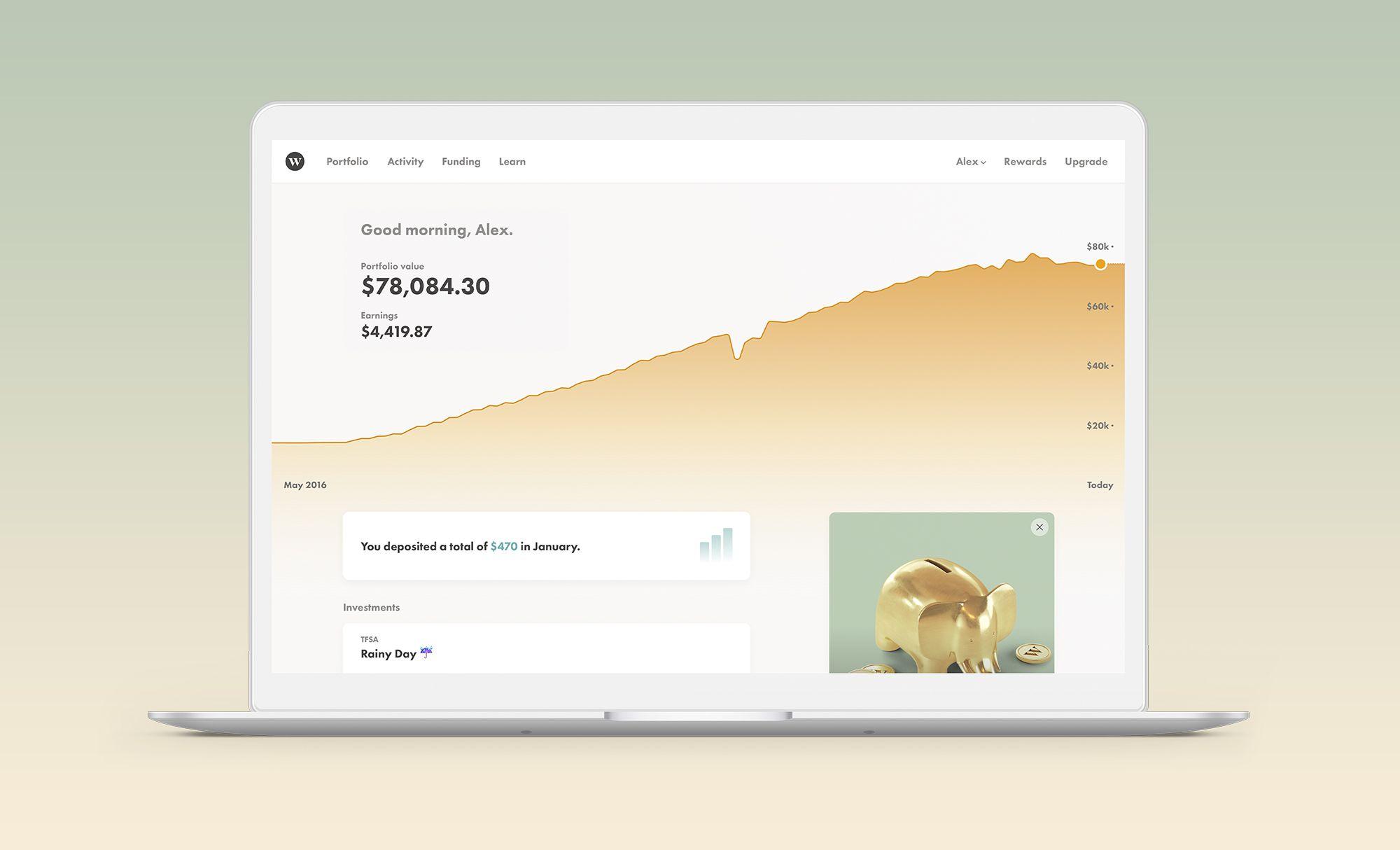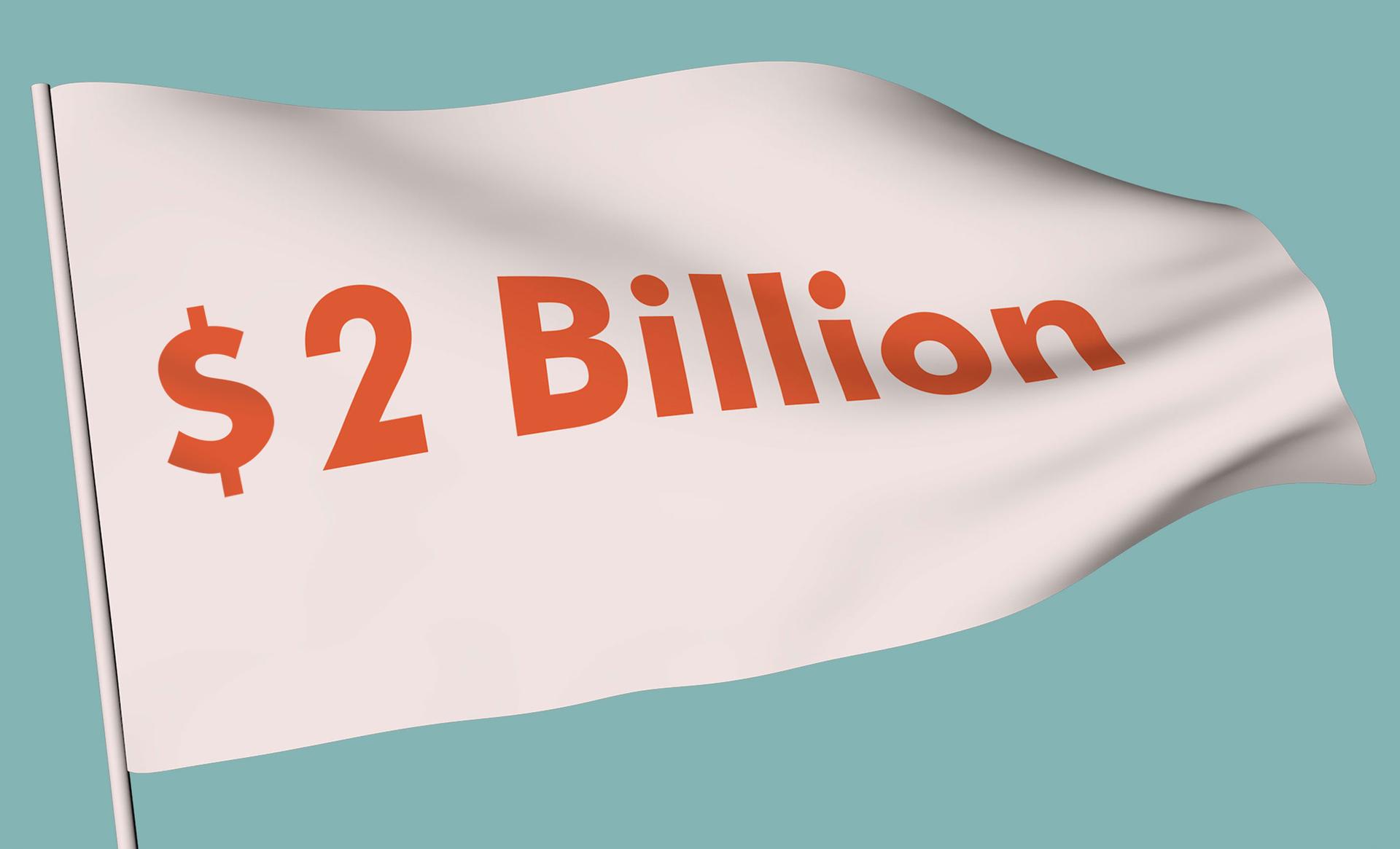
News
Your Portfolio Just Got Even Smarter
We’ve made some really important tweaks to our investment mix, designed to help protect you in a downturn and leave you poised for better returns in the future.
Wealthsimple makes powerful financial tools to help you grow and manage your money. Learn more
You’ve probably heard something about so-called “passive investing.” Especially if you’re a Wealthsimple client. Passive investing has become incredibly popular. We think that’s a good thing, because the same ideas underpin our strategy at Wealthsimple: don't constantly buy and sell investments, like stocks and bonds, trying to beat the market; instead, invest in whole chunks of the market at a lower cost and hold those investments over the long term. It's been the most effective way to invest over the past hundred years or so — Warren Buffett bet a hedge fund guy that passive investing was better than hedge funds, and he won.
But no one should underestimate how much rigorous research and analysis goes into constructing an effective portfolio. That’s the part that isn’t passive at all. And we wanted to let you know about some work we’ve done recently on our portfolios. Because we think it’s a good idea for our clients to be informed, and we also think the changes are pretty smart.
To help us understand what’s changed (and what hasn’t), we enlisted Michael Marco, Wealthsimple’s Director of Investments, to explain.
So did you guys just, like, look at what the market's been doing and change some stuff up?
No! We don’t bet on short-term market dynamics because we don’t know what’s going to happen. One of the most important things to understand when you're in this line of business is your own inability to see the future. A lot of investors spend an enormous amount of time and resources trying to figure out how they can beat the market by predicting how certain assets are going to perform. Then they bet on those predictions. For the vast majority, their odds are no better than if you picked investments at random, and may actually be worse.

Sign up for our weekly non-boring newsletter about money, markets, and more.
By providing your email, you are consenting to receive communications from Wealthsimple Media Inc. Visit our Privacy Policy for more info, or contact us at privacy@wealthsimple.com or 80 Spadina Ave., Toronto, ON.
Well, then what changes are you making — and why — if they’re not informed by what's going on in the markets?
We want our clients’ investments to perform as well as possible, even during a downturn. And one of the best ways to do that is through diversification. One problem with a lot of portfolios is that most of their risk is in stocks. People like stocks for the returns. But when the market tanks, a lot of folks have little to protect them and can panic and sell at what is often the worst possible time.
So what specifically did you change to protect me from my own worst, most emotional instincts?
We added three types of assets to our portfolios: minimum volatility equities, longer-duration bonds, and inflation-linked bonds; and we’re improving the geographical diversification.
Interesting. Let's start with geographical diversification. Why does it matter where a company is located?
When you're investing, it's dangerous to be exposed to one country disproportionately. By spreading your investments around the globe, you minimize your vulnerability to the risks specific to any one country. We’ve increased exposure to international equities, including emerging markets, so that if there are problems in any single market, the impact on our clients will be relatively small.
Great. Now let's get to those other portfolio improvements you were talking about. They sound impressive, but, let's say, for argument's sake, that we have no idea what “min vol equities” are...
OK, let's say you invest in something like the S&P 500 by way of an exchange-traded fund (ETF). In an ETF, you're not buying shares of all those 500 largest publicly traded companies in America equally — you're buying them in proportion to their size. It's a good way to get cheap, broad exposure to the market, but it's not necessarily the best way to allocate capital.
Let me interrupt for a second. Are you saying that just because something is bigger, you shouldn't necessarily want more of it?
Yes, just because Apple is 70 times the size of Domino's Pizza doesn't mean you want 70 times as much of it in your portfolio. Why not? Because we have no reason to think the returns for Apple are going to be that much higher than the returns for Domino's Pizza — they may actually be lower.
It would be better to equal-weight stocks. But an even smarter strategy is to account for how volatile different stocks are, and how they diversify each other. Because when you’re invested heavily in volatile stocks, it can have a major effect on your portfolio. Just as you don't want the performance of Apple to overwhelm the performance of Domino's Pizza in our example above, you don't want the most volatile stocks to overwhelm the least volatile stocks. Investing more in min vol equities means allocating more weight to less volatile, more diversified stocks.
So how does putting that kind of investment into the portfolio affect it?
Just to be clear, when markets are down across the board, our portfolios will be down as well. But we think having these investments can offer better protection in market downturns than traditional equity allocations. Min vol allocations are also more efficient, because they're designed to minimize risk without sacrificing return. Historically, they've outperformed traditional “market cap” weighted allocations (which weight stocks by size).
We don't know whether min vol equities will continue to outperform, but because of how they're designed, we expect them to continue to reduce risk. And that means we have room in our portfolios for more bond risk.
Wait, I thought bonds were not supposed to be risky at all?
People tend to think of bonds as these conservative, risk-free assets. But bonds can be relatively risky, too. They go up and down, like most investments. One way to understand risk in bonds is: the longer a bond's duration, the more sensitive it is to interest rates, which makes it riskier. Longer-duration bonds are a good thing for our portfolios because they diversify our stock market risk. And that's very important.
Let's say we go into an economic downturn. Equities will lose money. If you have a typical bond allocation, it'll make a little money, but not much. But if you have a longer-duration bond allocation, it should perform better, and the gains you'd realize with that part of your portfolio could give you a meaningful cushion to the market decline. It’s a helpful offset.
Do interest rates play a factor in any of these updates? I mean, I know you say you don't take market dynamics into account, but do interest rates count? Everyone's always talking about them.
We don’t bet on interest rates. For a long time, a lot of people were predicting that rates would rise. Now people are talking about rates falling. Again: being in the business of market prediction is dangerous, and not smart for long-term investors.
Let me guess: You guys don’t bet on inflation either.
Right. Bond prices are affected by inflation. The market has an expectation for where inflation’s going to be in one year, in five years, and so on. But that expectation is already reflected in the prices of bonds today. Now, if you want to make money taking active bets on inflation, you have to predict where inflation is going to go more accurately than the market does. We don't believe we have that kind of foresight. So, you’re right: we don’t bet on inflation, either.
I know you can choose lots of different ETFs to do similar things. How did you decide which ETFs to use?
We chose the best ETFs we could find for the exposures we're targeting. The biggest factor here was cost — how can we minimize management fees, transactions costs, and taxes. We're even tailoring what we invest in for different account types to take advantage of tax differences. For example, RRSPs aren't subject to a U.S. “withholding tax” for dividends. So in RRSPs, we're using a U.S.-based ETF called IEFA for international equities because it reduces the overall cost. But non-registered accounts and TFSAs would have to pay this tax, so we're better off using Canadian-listed XEF in those accounts. The tax considerations are complicated, but the point is, we're taking taxes into account to minimize total costs.
So is this going to be a regular thing? Tinkering with portfolios?
Our investing philosophy is still to invest in a diversified, low-cost portfolio that has the best chance of performing well over the long term. As we see ways to improve those portfolios, of course we'll take advantage. The important thing for you to know is that if your goals haven't changed, the portfolio we've selected for you is still the right portfolio for you. And the most important parts of investing are still things you can control: save, invest regularly, and stick to your plan.
If you’re the type who really wants to know the methods behind the way your money is invested, and your excitement for the words “min vol” is exceeded only by the term “risk-adjusted returns” — we’d love for you to read our Investment Methodology White Paper.
Wealthsimple's education team is made up of writers and financial experts dedicated to making the world of finance easy to understand and not-at-all boring to read.










